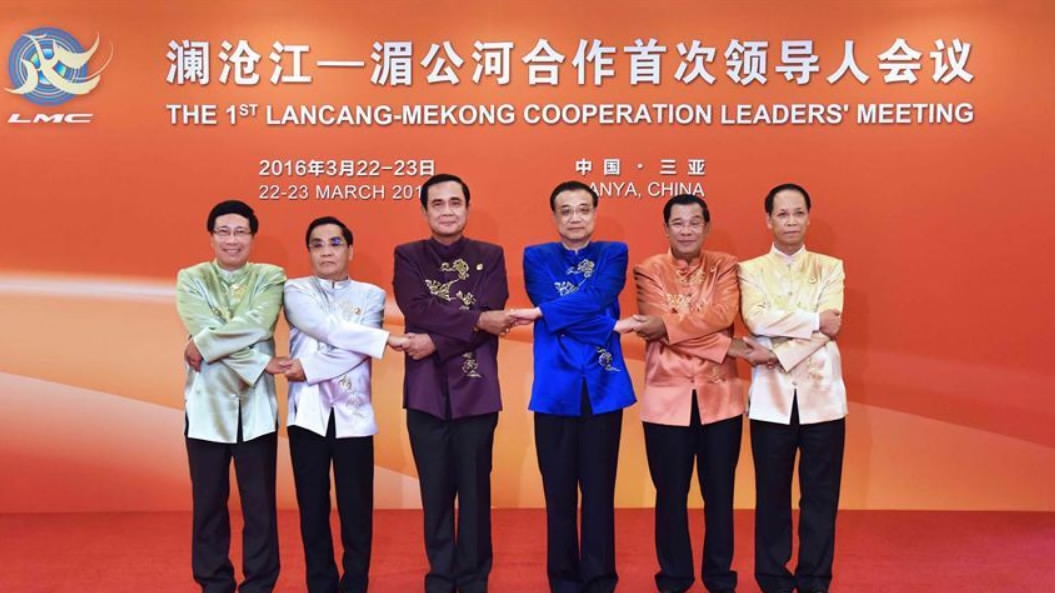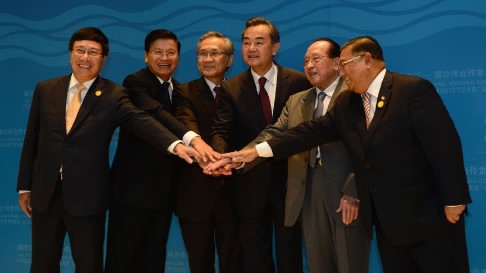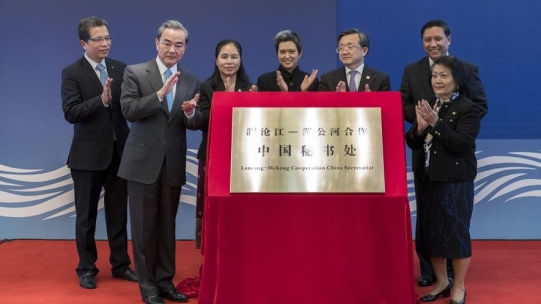"The Lancang-Mekong Cooperation (LMC) mechanism comes as a natural result of our existing cooperation, and will take full advantage of our close geographic proximity, traditional friendship and complementary economies," Chinese Premier Li Keqiang said at the first Lancang-Mekong cooperation leaders' meeting in Sanya, Hainan Province, on March 23, 2016.
On Wednesday, the second Lancang-Mekong Cooperation (LMC) Leaders' Meeting in Phnom Penh is being held with the theme "Our River of Peace and Sustainable Development". Here are the necessary points to know about this significant meeting.
The Lancang-Mekong Cooperation (LMC) mechanism
The Lancang River originates in the Qinghai-Tibet Plateau in southwest China. It is called the Mekong River once it flows through Myanmar, Laos, Thailand, Cambodia and Vietnam before emptying into the sea.

Chinese Premier Li Keqiang, Thai Prime Minister Prayut Chan-o-cha, Cambodian Prime Minister Hun Sen, Lao Prime Minister Thongsing Thammavong, Vice President of Myanmar Sai Mauk Kham, and Vietnamese Deputy Prime Minister Pham Binh Minh pose for photos in Sanya, south China's Hainan Province, March 22, 2016. A follow-up Lancang-Mekong Cooperation (LMC) Leaders' Meeting is taking place in Sanya. /Xinhua Photo
Chinese Premier Li Keqiang, Thai Prime Minister Prayut Chan-o-cha, Cambodian Prime Minister Hun Sen, Lao Prime Minister Thongsing Thammavong, Vice President of Myanmar Sai Mauk Kham, and Vietnamese Deputy Prime Minister Pham Binh Minh pose for photos in Sanya, south China's Hainan Province, March 22, 2016. A follow-up Lancang-Mekong Cooperation (LMC) Leaders' Meeting is taking place in Sanya. /Xinhua Photo
More than 326 million people live along the 4,880-km-long waterway, which flows through an area of more than 795,000 square km.
Chinese Premier Li Keqiang formally put forward the initiative of the LMC framework at the 17th China-ASEAN Summit, held in Nay Pyi Taw, Myanmar, on November 13, 2014. Then the mechanism was established in November 2015. The founding members of the LMC are China and five other Mekong states: Thailand, Cambodia, Laos, Myanmar, and Vietnam.
Political and security issues, economic and sustainable development, social, cultural and people-to-people exchanges are three cooperation pillars of the mechanism.
Connectivity, production capacity, cross-border economic cooperation, water resources, agriculture and poverty alleviation are five priority areas of the mechanism.
Major achievements since establishment
The Joint List of the LMC Early Harvest Projects was endorsed by the first LMC leaders' meeting in China's Hainan Province in March 2016.

Chinese Foreign Minister Wang Yi (3rd R) and senior foreign affairs officials from Cambodia, Laos, Myanmar, Thailand and Vietnam pose for a group photo before the 1st Lancang-Mekong Cooperation (LMC) foreign ministers' meeting, in Jinghong City, southwest China's Yunnan Province, Nov. 12, 2015. /Xinhua Photo
Chinese Foreign Minister Wang Yi (3rd R) and senior foreign affairs officials from Cambodia, Laos, Myanmar, Thailand and Vietnam pose for a group photo before the 1st Lancang-Mekong Cooperation (LMC) foreign ministers' meeting, in Jinghong City, southwest China's Yunnan Province, Nov. 12, 2015. /Xinhua Photo
The joint list, along with the Sanya Declaration and the Joint Statement on Production Capacity Cooperation among Lancang-Mekong Countries, laid a solid foundation and charted the course for LMC development.
The principles of the Five-Year Plan of Action of the Lancang-Mekong Cooperation (2018-2022) are agreed by ministers of the six countries and would serve as an LMC guiding document for the next five years and take LMC to a new level.
The List of the First Batch of Projects of LMC Special Fund, which is set up by China, has decided to provide support for 132 cooperation projects.
The Hotline Platform of LMC National Secretariats/Coordination Units was also built during the year 2016.
The Lancang-Mekong Water Resources Cooperation Center, Environmental Cooperation Center and the Global Mekong River Studies Center have been set up and the work has been carried out.

Chinese Foreign Minister Wang Yi (L, front) and Cambodian ambassador to China Khek Caimealy Sysoda (R, front) attend the launch ceremony of the Lancang-Mekong Cooperation (LMC) China Secretariat in Beijing, March 10, 2017. /Xinhua Photo
Chinese Foreign Minister Wang Yi (L, front) and Cambodian ambassador to China Khek Caimealy Sysoda (R, front) attend the launch ceremony of the Lancang-Mekong Cooperation (LMC) China Secretariat in Beijing, March 10, 2017. /Xinhua Photo
What's to be expected?
Chinese Ambassador to Cambodia Xiong Bo said in a recent signed article that the LMC mechanism has grown rapidly in less than two years and demonstrated strong vitality and robust development momentum under the political guidance of the leaders of the six countries.
The 2nd Lancang-Mekong Cooperation Leaders' Meeting will review the outcomes of Lancang-Mekong Cooperation, draw on past experiences and exchange in-depth views on a future development plan with leaders of Cambodia, Laos, Myanmar, Thailand and Vietnam.
The downward trend of global and regional economic growth, poverty reduction, development gaps, water resources management and non-traditional security threats will be challenges ahead to face.
(With inputs from Xinhua)





